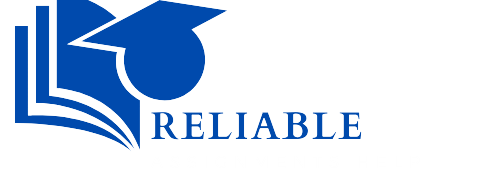| ASSESSMENT 1 BRIEF | |
| Subject Code and Title | CAO107 Computer Architecture & Operating Systems |
| Assessment | Study of basic computer architecture |
| Individual/Group | Individual |
| Length | 800 words (+/- 10%) |
| Learning Outcomes | The Subject Learning Outcomes demonstrated by the successful completion of the task below include: a) Describe the internal operations of computer architecture including digital data and the computer instruction cycle. |
| Submission | Due by 11:55pm AEST/AEDT Sunday end of Module 4. |
| Weighting | 25% |
| Total Marks | 100 marks |
Assessment Task
In this assessment, you are required to apply the theories and knowledge you have learned in Modules 1 to 4 to answer questions relating to computer architecture history, basic numbering system, memory, and instruction cycle process in the Workbook. With this assessment, you should demonstrate your understanding of computer architecture history, basic numbering system, memory, and instruction cycle process. The workbook questions are based on Modules 1 to 4.
Context
Computer architecture helps understand computer organisation as it describes how different components of the computer communicate with each other such as CPU, I/O, memory etc. In addition to seeking an understanding of computer architecture, how machines handle complex tasks also demands plenty of hands-on practice and a curious mind. In this assessment, you will consolidate computer architecture knowledge from Modules 1 to 4 by writing and solving different tasks for computer system architecture history, numbering system and its conversion, the role of memory and its management, buses, computer instruction cycle, and identification of the addressing modes in a simple assembly code.
Instructions
The workbook consists of four major questions. In each question, there are subtasks. All subtasks should be completed.
To complete this assessment task, you must:
- Make sure to read the questions carefully and understand them before you start.
- Answer ALL questions.
- Show your work and the steps taken for each answer. Provide examples for your discussions and answers to demonstrate your thorough understanding. Partial marks will be awarded for the correct work even if the final answer is incorrect.
- The weighting of each question is indicated in brackets () at the end of each question.
Submission Instructions
Your submission should contain the answers to the questions provided in the workbook. Submit your assessment via the Assessment 1 link in the main navigation menu in the CAO107 Computer Architecture and Operating Systems Blackboard portal. The file should be in .pdf format and the following naming convention:
CAO107_Assessment1_LastName_FirstName.pdf
Your Learning Facilitator will provide feedback via the Grade Centre in the LMS portal. Grade Centre Feedback can be viewed in My Grades.
Note: Your Learning Facilitator may have cause to alter these requirements slightly for packaging and delivering your finished work. It is important you attend or watch class streams, keep track of Blackboard announcements/emails and, if in doubt, ask questions of your Learning Facilitator well before the final due date.
Before you submit your assessment, please ensure you have read and understand the conditions outlined in the Academic Integrity Code Handbook. If you are unsure about anything in the Handbook, please reach out to your Learning Facilitator.
Academic Integrity
All students are responsible for ensuring that all work submitted is their own and is appropriately referenced and academically written according to the Academic Writing Guide. Students also need to have read and be aware of the Torrens University Australia Academic Integrity Policy and Procedure and subsequent penalties for academic misconduct. These are viewable online.
Students also must keep a copy of all submitted material and any assessment drafts.
Special Consideration
To apply for special consideration for a modification to an assessment or exam due to unexpected or extenuating circumstances, please consult the Assessment Policy for Higher Education Coursework and ELICOS and, if applicable to your circumstance, submit a completed Application for Assessment Special Consideration Form to your Learning Facilitator.
Assessment Rubric
| Assessment Attributes | Fail (Yet to achieve minimum standard) 0-49% | Pass (Functional) 50-64% | Credit (Proficient) 65-74% | Distinction (Advanced) 75-84% | High Distinction (Exceptional) 85-100% | ||||
| Question 1 Computer Architecture History: Demonstrated understanding of the task and applied knowledge in computer architecture to answer the given task/problem. Marks for this criterion = 20% | • Explanation of Moore’s Law with historical diagram indicates large gaps with the task description. | • | Explanation of Moore’s Law with historical diagram indicates considerable gaps with the task description. | • | Explanation of Moore’s Law with historical diagram indicates some gaps with the task description. | • | Explanation of Moore’s Law with historical diagram indicates a few important gaps with the task description. | • | Explanation of Moore’s Law with historical diagram indicates no or very minimal gaps with the task description. |
| Question 2 Numbering System: Demonstrated understanding of the numbering system conversions and logical expressions, and its importance in computer architecture along with the ASCII code. Marks for this criterion = 30% | Little or no knowledge of numbering system conversions, and logical expressions. Most of the answers are wrong. There is little or no discussion on the applications and importance of the numbering system in computer architecture and ASCII code. | • • | Acceptable but further work is required to show knowledge of numbering system conversions, and logical expressions. Some of the answers are correct, however discussions are not satisfactory. | • • | Good level of knowledge about numbering system conversions, and logical expressions. Most of the answers are correct, however some discussions are not highly relevant to applications. | • • | Very good knowledge about numbering system conversions, and logical expressions. Most of the answers are given with step-by- step procedures and lead to the correct answer. The discussions and examples are relevant but not in-depth. | • • | Excellent and thorough understanding of knowledge about numbering system conversions, and logical expressions. All the answers are given with step-by-step procedure and lead to the correct answer. The discussions are in-depth and applications are highly relevant. |
CAO107_Assessment 1_20240603
| Question 3 Computer Architecture and Memory: Answers provided demonstrates the knowledge and understanding of the computer architecture, buses and memory to answer the given task/problem. Marks for this criterion = 30% | • | Most of the answers are incorrect. There is little or no relevant discussion on RISC/CISC architecture, types of buses, memory performance, constraints, and trade-offs. | • | Acceptable but further work is required to show the knowledge of computer architecture, buses, and memory. Some of the answers are correct. There is some relevant discussion on RISC/CISC architecture, types of buses, memory performance, constraints, and its trade-offs. There are inconsistencies in the answer layout, detail, content, and technical justification. | • | Good level of knowledge about computer architecture, buses, and memory. There is a relevant discussion on RISC/CISC architecture, types of buses, memory performance, constraints, and its trade-offs. There are inconsistencies in the answer layout, detail, content, and technical justification. The answer needs more information. | • | Very good knowledge about computer architecture, buses, and memory. Most of the answers are correct. There is relevant discussion on RISC/CISC architecture, types of buses, memory performance, constraints, and its trade-offs. Answers are very good in the layout, detail, content, and technical justification of the task requirement. | Excellent and thorough understanding of knowledge of computer architecture, buses, and memory. All the answers are correct. There is a relevant discussion on RISC/CISC architecture, types of buses, memory performance, constraints, and its trade-offs. The answers are very well done in the layout, detail, content, and technical justification of the task requirement. | |
| Question 4 Instruction Cycle and Addressing Modes: Answers provided demonstrates the knowledge and understanding of the computer instruction cycle and addressing modes as per the given task/problem. Marks for this criterion = 20% | • | Little or no knowledge of computer instruction cycle and addressing modes. There is little or no relevant discussion on the computer instruction cycle, addressing modes, and assembly code function. | • | Acceptable but further work is required to show the knowledge of computer instruction cycle, a function of the assembly code, and identification of the addressing modes. There is some relevant discussion regarding the given task/problem of the instruction cycle, addressing modes, and assembly code function. There are major inconsistencies in the | • | Good level of knowledge computer instruction cycle, addressing modes, and assembly code function. Mostly there is relevant discussion regarding the given task/problem of the instruction cycle, addressing modes, and assembly code function. There are inconsistencies in the answer layout, detail, content, and technical | • | Very good knowledge about computer instruction cycle, addressing modes, and assembly code function. Very relevant discussion regarding the given task/problem of the instruction cycle, addressing modes, and assembly code function. Answers are very good in the layout, detail, content, and technical justification | • | Excellent and thorough understanding of knowledge of computer instruction cycle, addressing modes, and assembly code function. All the answers are correct. Excellent relevant discussion regarding the given task/problem of the instruction cycle, addressing modes, and assembly code function. The answers are very well done in |
CAO107_Assessment 1_20240603
| answer layout, detail, content, and technical justification. | justification. The answer needs more information. | with the task requirement and need minor improvement. | the layout, detail, content, and technical justification of the task requirement. The discussions are in-depth and applications are highly relevant. |
| The following Subject Learning Outcomes are addressed in this assessment | |
| SLO a) | a) Describe the internal operations of computer architecture including digital data and the computer instruction cycle. |

